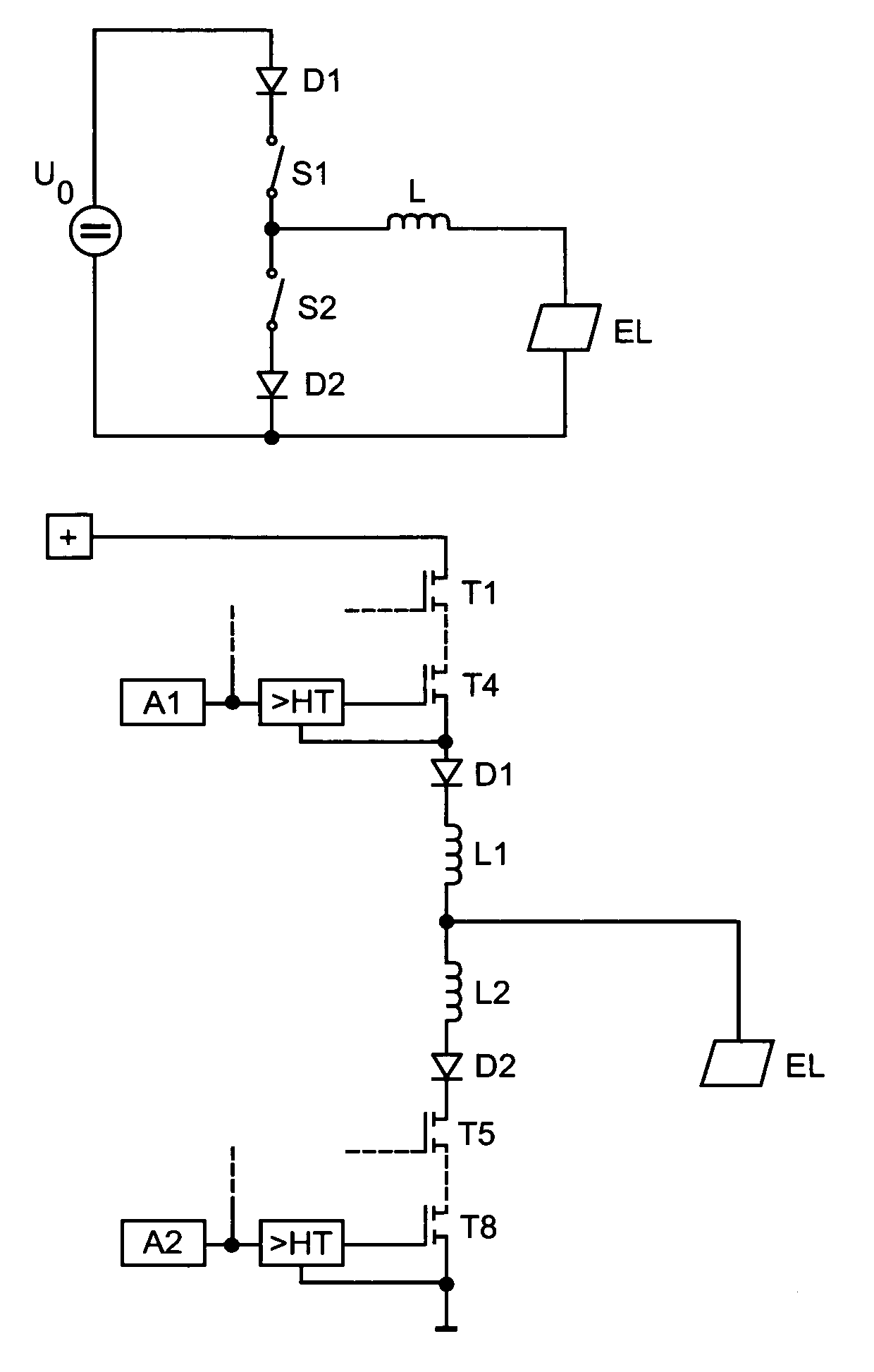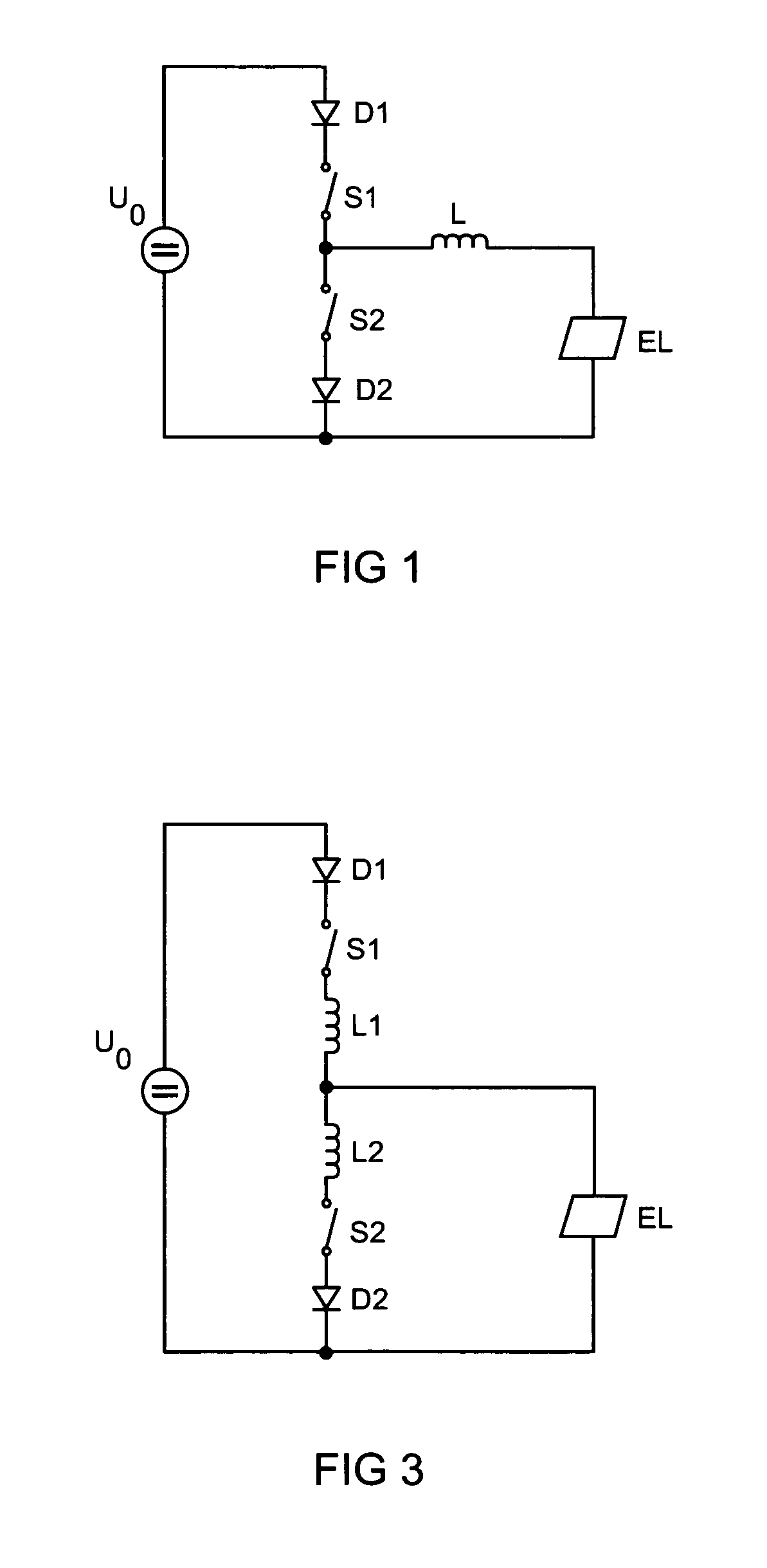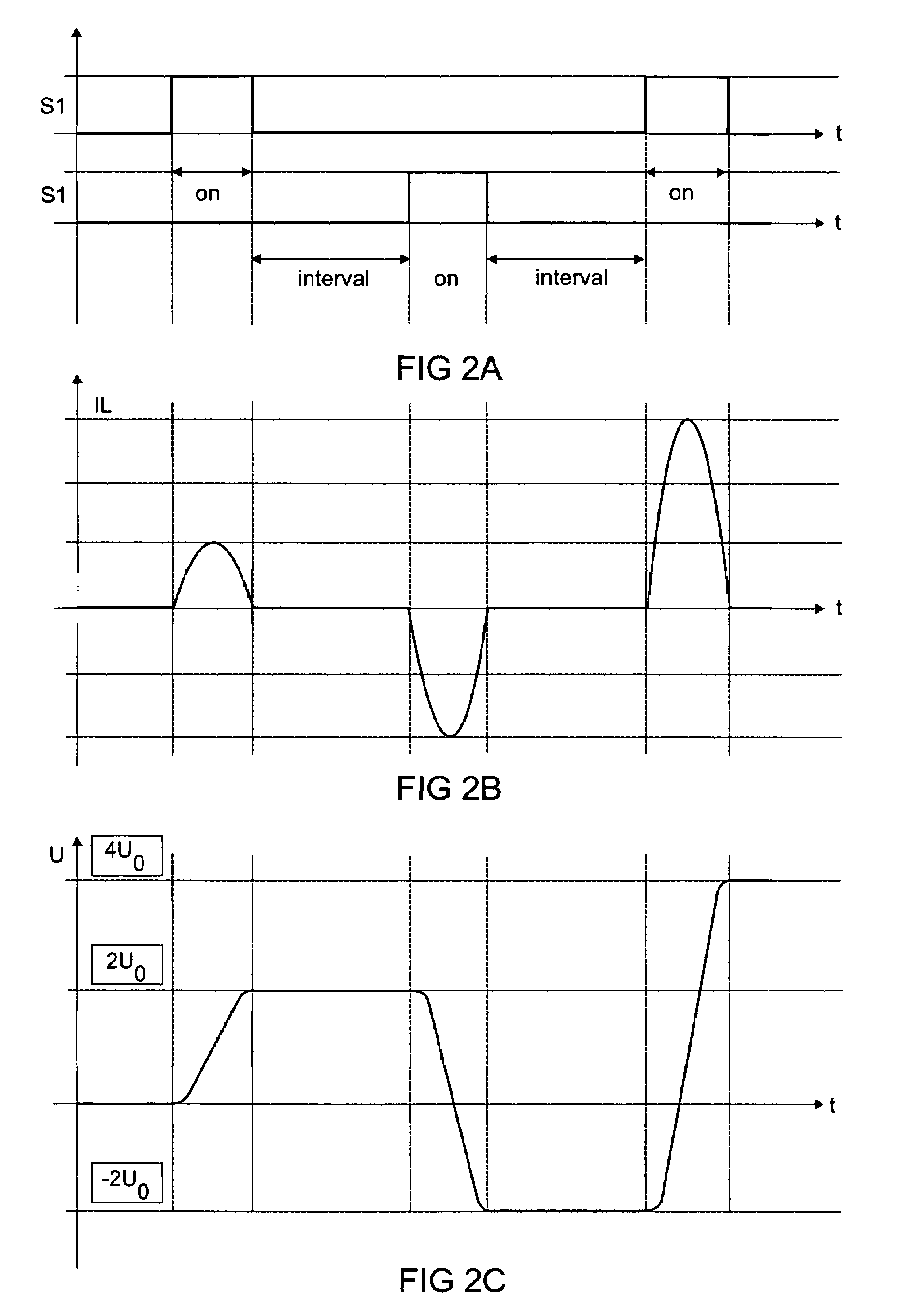Circuit arrangement having a converter without a transformer but with an inductor for the pulsed operation of dielectric barrier discharge lamps
a dielectric barrier discharge lamp and converter technology, applied in the direction of electrical variable regulation, sustainable buildings, instruments, etc., can solve the problem of increasing the core volume of the transformer or the input inductor with the lamp power, and achieve the effect of reducing the need for transformer core volume or the increase of the input inductor
- Summary
- Abstract
- Description
- Claims
- Application Information
AI Technical Summary
Benefits of technology
Problems solved by technology
Method used
Image
Examples
Embodiment Construction
[0032]FIG. 1 shows the basic circuit diagram of a first variant of the half-bridge inductor-type converter according to the invention. Said half-bridge inductor-type converter has two switch branches connected in series which each comprise a current valve D1, D2, for example a diode, and a switch S1, S2, for example a transistor, in particular a field effect transistor (FET) or MOSFET. The center point of the series circuit comprising the two switch branches is connected to a lamp branch, which comprises an inductor L and a dielectric barrier discharge lamp EL connected in series with said inductor L. The lamp branch is connected in parallel with one of the two switch branches. For lamp operation, the terminals of the series circuit comprising the two switch branches are connected to an electrical supply source U0.
[0033]In order to describe the manner in which the basic circuit shown in FIG. 1 functions, reference will also be made below to the signal profiles illustrated in FIGS. 2...
PUM
 Login to View More
Login to View More Abstract
Description
Claims
Application Information
 Login to View More
Login to View More - R&D
- Intellectual Property
- Life Sciences
- Materials
- Tech Scout
- Unparalleled Data Quality
- Higher Quality Content
- 60% Fewer Hallucinations
Browse by: Latest US Patents, China's latest patents, Technical Efficacy Thesaurus, Application Domain, Technology Topic, Popular Technical Reports.
© 2025 PatSnap. All rights reserved.Legal|Privacy policy|Modern Slavery Act Transparency Statement|Sitemap|About US| Contact US: help@patsnap.com



